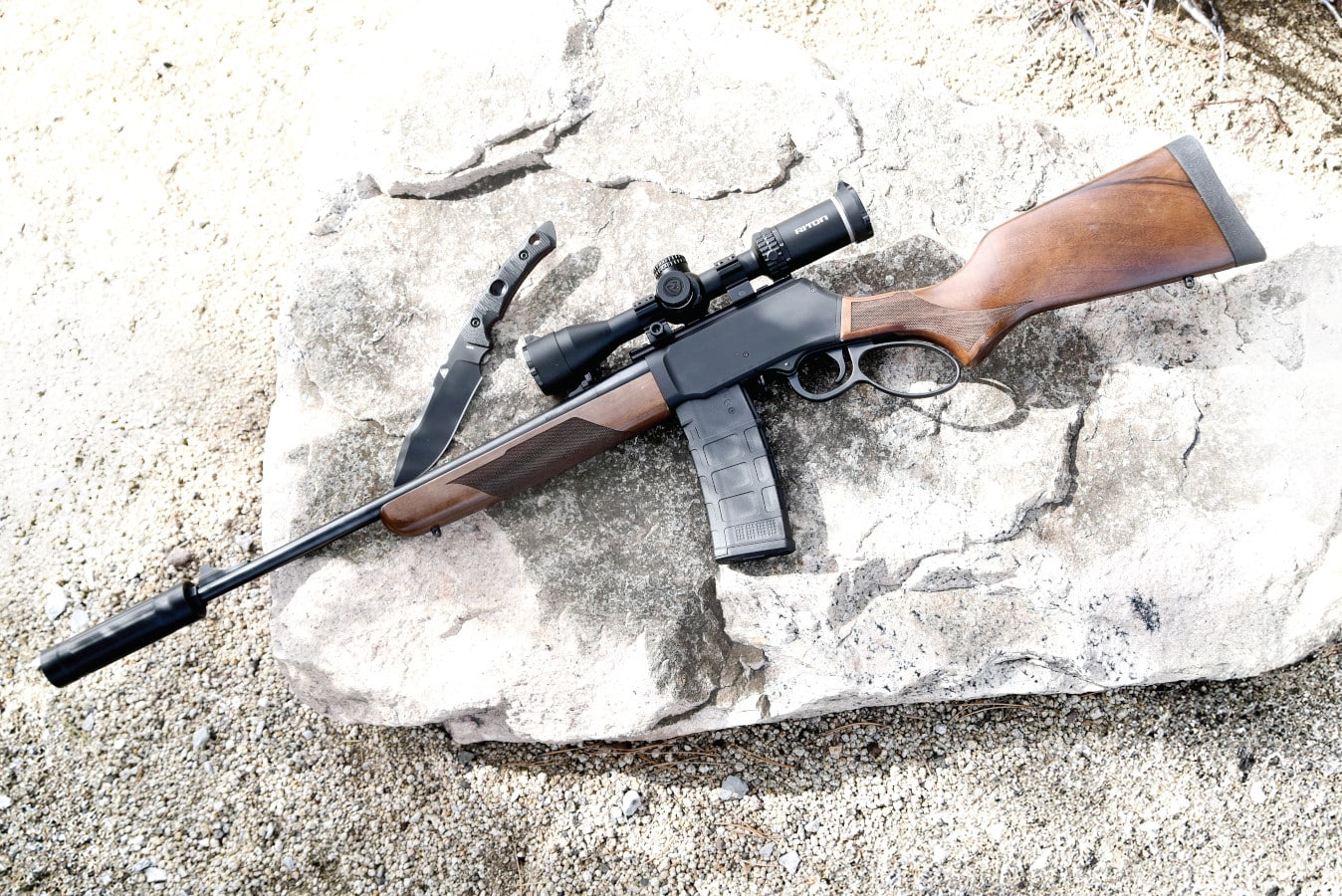At one time it was easy for the more tactically minded to blow off a lever-action rifle. The arguments were there: It’s outdated technologically, reach rarely extends beyond 200 yards, the capacity is just too low, the calibers too old, in most cases it’s hard to improve the sights — and on top of all that you had to clean them from the muzzle to the breach. But recent years have proven many of these arguments are outdated themselves.
For one reason or another, the 21st century has made many shooters reconsider the lever action as a worthy rifle. There’s always the nostalgia bug, where some of us think of ourselves as cowboys when the most utilitarian rifle you could have had was a trusty Marlin or Winchester. The longing for simpler times when things get rough.
As interest in hunting increased during COVID so did guns in some older calibers; there are states that only allow straight-wall cartridges for centerfire hunting due to population encroachment on the wilderness, and it’s easier to shoot .44 Magnum, .357 Magnum, or even .45-70 out of a tube-fed rifle than to get one in a bolt-action or semiauto.
Henry’s latest, the Lever Action Supreme Rifle, goes a step further and addresses the concerns of capacity and ammunition commonality in one swoop by offering chamberings in both .223 and .300BLK and feeding from AR-15 magazines. Of course, the traditional lever gun shooters don’t care for the tacticool lever rifles with threaded barrels, rails, and black plastic instead of traditional walnut, but sometimes you can have it both ways.
- Caliber: 5.56mm
- Capacity: 5/10/30
- Barrel Length: 18 inches
- Overall Length: 38.15 inches
- Barrel Twist: 1/8
- Weight: 6.65 pounds
- MSRP: $1,299
Lever-action rifles make excellent suppressor hosts. Their manual operation means there is no gas system to overpressure, and sealed receiver ensures that there’s no chance for gas or sound to escape from the ejection port during the firing sequence. The rifle will be as quiet as the silencer allows, and you won’t get a blast of hot gas in your face either.
It’s only natural that Henry ships their 5.56mm LASR model with a 1/2×28 TPI threaded barrel to attach a muzzle device or a silencer. The stainless barrel features a 1/8 twist to accommodate a wide variety of projectile weights.
It has a two-piece walnut stock and forend like most lever actions. That might stop some precision shooters dead in their tracks because lever guns routinely have barrel bands, screws, and other parts that contact the barrel and can potentially affect accuracy by throwing off the harmonics.
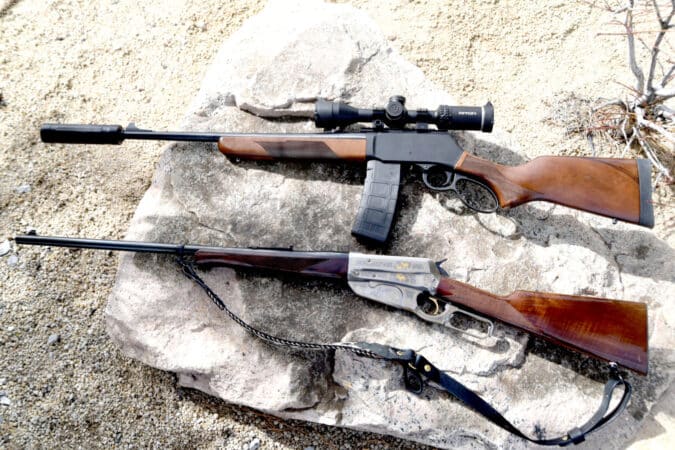
But because there’s no magazine tube on the Supreme Lever Action, there are no barrel bands. This may leave you with trepidation regarding the walnut forend but rest assured, it’s of no concern. The forend ingeniously mounts to an aluminum extension below the barrel, meaning that the barrel is completely free-floated like a quality bolt-action or semiautomatic precision rifle.
And of course, instead of a feeding tube like we see on so many other lever guns, the Henry Supreme Lever Action feeds via a detachable AR-15 magazines and comes shipped with a Magpul PMAG.
Some purist lever-action types may not like this feature, but a real shooter will only appreciate it. The primary reason is that it’s quicker to reload/unload, but secondarily, it allows for a more diverse selection of ammunition — because tube-loaded rifles always have a risk of chain fire in the tube regarding spire pointed projectiles (that’s one reason why straight-wall, blunt-bullet cartridges are traditionally used).
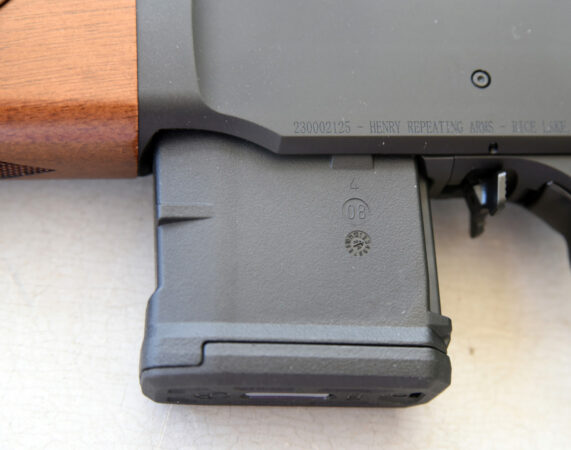
The PMAG it comes with is a 10-rounder with a 5-round limiter in it to comply with the hunting regulations of many states. But it’s not like AR mags of different sizes are expensive or hard to source. A lot of different magazines were used in this test. PMAGs of all sizes worked flawlessly, as did the Lancers and even HK polymer magazines.
GI-type metal magazines were a mixed bunch: the 20-rounders seemed fine but on a few 30-rounders, we got some failure-to-feed malfunctions. If you want to go beyond the stock 10-round magazine that ships with the rifle, go with PMAGs because it was clearly designed with those in mind.
Speaking of AR-15s, the rifle uses a rotating AR-15 style bolt head and firing pin. The bolt carrier resembles that of an AR, but it isn’t compatible, just “inspired by.” The use of the AR bolt is significant because it means that in the future, Henry can chamber the Supreme Lever Action in just about any caliber that an AR can handle by changing the bolt and barrel. While the initial choices are limited to 223/5.56 and .300 Blackout, chamberings such as .450 Bushmaster, 7.62×39, .458 SOCCOM, or even 6mm ARC and the like may not be that far behind.
Many old-time lever gun enthusiasts gnash their teeth and howl in anguish at the thought of modern safeties on a lever gun, or safeties on guns at all. They prefer the half-cock notches on the 19th century Winchesters and look down on improvements made to help new shooters or those who may only use their rifles once every other deer season.
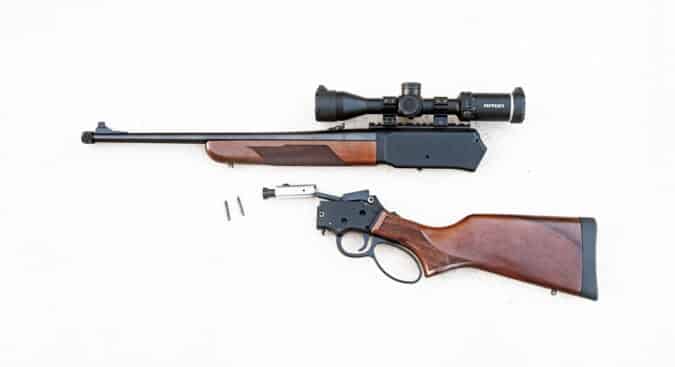
Now they have two things to cry about. The primary safety is ambidextrous and tang mounted. There’s also a secondary safety in the form of a spring-loaded hook that engages the trigger as the lever is opened to prevent the trigger from moving.
Ready to go out of the box, the Supreme Lever Action is graced with a set of adjustable iron sights mounted on the barrel and has a receiver that’s drilled and tapped for an optic mount. Skinner Sights of St. Ignatius, Montana, makes a rugged Picatinny rail mount that goes on here to allow you to run a scope, dot sight, or reflex optic of your choice.
The soul of the rifle is in its trigger, and Henry makes a nice one included with the Supreme Lever Action that’s completely adjustable from 3 to 6 pounds.
Another noteworthy feature is the slickness and quickness of the lever. It’s hard to make this mechanism work well, especially with skinny 5.56 rounds from a magazine, but it’s buttery smooth through the entire sequence of operation. On par with the quality of a Browning BLR.
Lastly, the rifle completely breaks down so you can clean it from the breach toward the muzzle, without having to worry about damaging the crown. The Supreme Lever Action completely removes almost every conceivable shortcoming of the traditional lever action rifle — except for making it a semiauto, of course.
Overall, the Henry Lever Action Supreme Rifle handles well. As mentioned, the action is incredibly smooth, and you can dial that trigger in to your liking. This one took a Riton Optics Primal variable 3-9×40. For a modestly priced scope, the optics were very clear, and the adjustments were crisp and positive. The mid-market has come an awfully long way in a short period of time. The new Vortex Viper seen elsewhere in this issue would also be an excellent choice if a red dot is what you’re after.
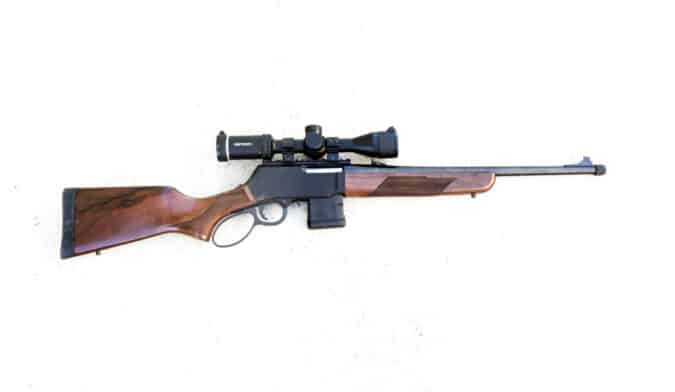
A Bushmaster 5.56 Muta was used as a silencer, keeping to the budget theme; at the time of writing, Bushmaster has blems of this model on sale for under $300. It’s not a bad silencer, and noticeably quieter than when it was mounted to assorted AR-15s. Chalk more up to that closed-action.
One hundred yards seemed too close for some reason, so this one was bench rested at the 200-yard line. After minor adjustments to the scope and some Black Hills 77-grain OTM, the rifle proved to be a shooter having no issue with sub-torso targets. It was shot for volume with mixed lots of 69-grain and 55-grain ammo from Igman, Sterling, and Global Ordnance. Outside of a few initial feeding issues with metal 30-round magazines, everything ran smoothly.
This is a huge step in the right direction for Henry, as the AR market has been pretty saturated for many years, and rifles like this will only help convert a lot of shooters to the way of the lever gun. This rifle could be hugely popular in certain markets at home or abroad, where semiauto rifles are heavily restricted. It’s also far less likely to suffer from legal restrictions in the future all while remaining quite a capable rifle.
Still, the salty lever gun fellas will find fault with it. No external hammer, “poodle shooting” cartridges, that external magazine that hangs too low, and of course the barrel threads. We should embrace these upgrades and look forward to a future where these will be available in different chamberings
Another ray of hope for this platform to untap more potential will be the vigorous aftermarket. Although the walnut stock and forend are nothing short of beautiful, walnut can take a beating in the field. Laminates from Boyds or synthetics from MagPul, Ranger Point Precision, and a host of others could really be spectacular on the Henry Lever Action Supreme Rifle. Plus, barrel makers could have their hands full trying to keep up with the demand from the shooting public.
Henry went all out on this one, and its future looks bright, ushering in a new era of high-performance, long-range lever guns. I personally can’t wait for the big medicine cartridges in .308 Winchester and 6.5 Creedmoor — let’s see.
Read the full article here

